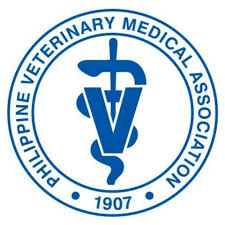The PVMA Constitution and By-Laws was amended in 1918 February 5, a Tuesday, the first day of the 7th Annual Meeting. The new provision now allowed graduates of the College of Veterinary Science of the University of the Philippines membership in the association. Membership in the 1914 Constitution and By-Laws was limited to graduates of Veterinary Schools recognized by the American Veterinary Medical Association. The officers at the time were Drs. William H. Boynton, W.W. Richards, E. S. Merchants, and Stanton Youngberg, President, Vice-President, Secretary and Treasurer respectively. Dr. Boynton, pathologist of the Bureau of Agriculture developed the Rinderpest vaccine in 1920 which led to the eradication of Rinderpest by 1939; the last outbreak in Negros Occidental was controlled in 1938 September 21. Dr. Boynton was working as a pathologist in the New York State College of Veterinary Medicine at Cornell University when summoned through the intercession of Dr. Archibald R. Ward, who was his mentor. He was eventually awarded the PVMA Honorary Membership in 1936 .
Only four Filipino Veterinarians were eligible for membership under the 1914 Constitution and By-Laws; these veterinarians were those registered in the list of the Veterinary Examining Board, VEB of the Bureau of Agriculture beginning 1913 November 4. Act 2245, An Act to regulate the practice of veterinary medicine and surgery in the Philippine Islands was enacted by the Third Philippine Legislature on its Special Session in 1913 February 11. The veterinarians were Dr. Victor A. Buencamino who graduated from the New York State College of Veterinary Medicine at Cornell University in 1911, Dr. Vicente G. Ferriols, who graduated from the Iowa State College of Agriculture and Mechanic Arts in 1912 and Dr. Ventura T. Gatchalian who graduated presumably in a veterinary school in the United States of America before the registration date in 1913. The fourth, Dr. Sixto N. Almeda Carlos graduated from The San Francisco Veterinary College in 1916. The first three were registered with the VEB in 1913 with registration numbers 0022, 0003, and 0030 respectively; Dr. Almeda Carlos was registered in 1916 with registration number 0057. Dr. Victor A. Buencamino became the Director of the Bureau of Animal Industry, BAI in 1933, while Dr. Vicente G. Ferriols became the Director of the BAI in 1946. Dr. Ventura T. Gatchalian became the District Veterinarian of the Bureau of Animal Industry for Nueva Ecija and stationed at Cabanatuan in 1932; and Dr. Sixto N. Almeda Carlos, who worked very briefly with the Bureau of Agriculture in 1916, was the veterinarian of the Buencamino Veterinary Hospital from 1916 to 1927; later in 1927 he established his veterinary clinic at 185 Marquez de Comillas now 839 Romualdez, Ermita Manila; this eventually became the Dog and Cat Hospital. Except for Dr. Buencamino, the other three Drs Ferriols, Gatchalian and Almeda Carlos were not given the privilege of being members in 1914 and in 1916 despite the fact that they graduated from Veterinary Colleges in the United States of America. The PVMA membership diplomas of Drs. Ferriols and Almeda Carlos issued by Drs. Gregorio M. San Agustin, and Manuel D. Sumulong, president and Secretary-Treasurer respectively in 1934 June 20 attested to the election of both as members as of 1918 February 5.
A veterinarian, Mariano Juan Francisco Muñoz y Tomen registered with the Veterinary Examining Board in 1914 August 29 with registration number 0048 was not a member of the PVMA as based on available records. This veterinarian could be a Philippine resident, possibly Spanish. Section 12 of Act. No. 2245 states that Every person of a good moral character not less than twenty-one years of age who is a resident of the Philippines Islands, and who by verified statements satisfies the board to that effect, shall upon application be admitted to take examination with a view of becoming a certified veterinarian.
Section 3 of Article II Application for membership of the 1935 PVMA By-Laws stated that only those who have been graduated from schools recognized by the American Veterinary Medical Association and those from the University of the Philippines may be admitted to active membership. On the other hand, the Section 3 of Article VIII Application for membership of the 1953 PVMA By-Laws stated that only those who have been graduated from schools or colleges recognized by the Government or by the American Veterinary Medical Association may be admitted to active membership.
Membership per the PVMA Constitution and By-laws of 1935 and 1953 and by extension, the 1914, 1918, 1937, 1938, 1939 PVMA Constitution and By-laws only required that the applicant be a graduate of a veterinary school. However in 1974 at the 42nd PVMA Annual Convention, held at the University of the Philippines Law Center, the PVMA Constitution was amended to limit membership to the PVMA to those graduates of Doctor of Veterinary Medicine who have passed the board examinations and licensed by the Professional Regulation Commission, PRC with an updated PRC registration. Those who were not licensed by the PRC but were members prior to the 1974 amendment were allowed to retain their membership. This was not reflected in the constitution and written records are not available; however, a gentleman’s agreement still exists and guarded only by those who witnessed the agreement in the 1974 plenary session.
Consequently the 1982, 1989, and 1997 constitution clearly defines the current status for membership. Article III Membership, Section 1 states that Membership in this association shall be exclusive to those graduate Veterinarians licensed by the Professional Regulation Commission, PRC to practice in the Philippines. To maintain membership, the life or regular member shall have to update his or her PRC registration.
The PVMA was first Registered with the Securities and Exchange Commission in 1953 October 23. Having a life span of 50 years, the PVMA Board of Directors will have to negotiate for its extention.
